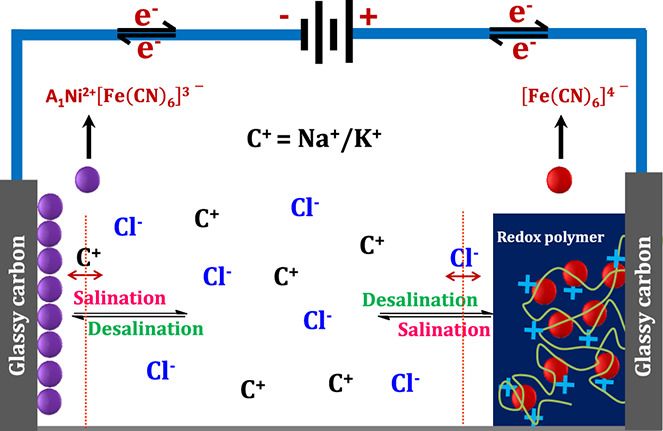New Route to Membraneless Reversible Desalination Batteries
Published on by Water Network Research, Official research team of The Water Network in Technology
The desalination battery is an emerging concept used in electrochemical technology for solving the problems of seawater desalination.
By Jolke Perelaer, Advanced Science News
In this process, the ions are removed (desalination) from seawater by applying current to the battery electrodes, where ions are intercalated into the bulk electrodes, and the intercalated ions are removed from the electrodes (salination) by draining the current from the battery.
However, identifying an efficient Cl– storage electrode is a major challenge for the development of seawater desalination batteries.
Dr. James Joseph and his research team from the Central Electrochemical Research Institute in Karaikudi, India, have worked on a new type of membraneless and reversible desalination battery.
Their research work highlights the possibility of removing ions from seawater by operating at low voltages and gaining high voltage output during the salination process, by the simple interchange of the electrode.
Their design concept consists of an efficient, stable, reversible, high capacity chloride storage electrode; ferrocyanide ion-immobilized polysilsesquioxane (redox-PSQ) in combination with a cation storage material.
The redox-PSQ polymer was found to be superior to other reported chloride storage electrodes in terms of cost, durability, reversibility, and chloride ion removal capacity in real time applications.

Illustration of the working principle of a desalination battery.
Experimental results showed that their redox polymer film was capable of withstanding a real seawater environment without loss of its electrochemical activity.
Source: Advanced Science News
Media
Taxonomy
- Reverse Osmosis
- Membranes
- Polymeric Membranes
- Desalination
- Membrane Technology
- Reverse Osmosis
- Membrane Filtration
- Sea Water Desalinisation
- Sustainable Desalination
- Polymeric Film Evaporation Technology
- Polymers & Plastics
- Polymer Membranes
- Membrane distillation